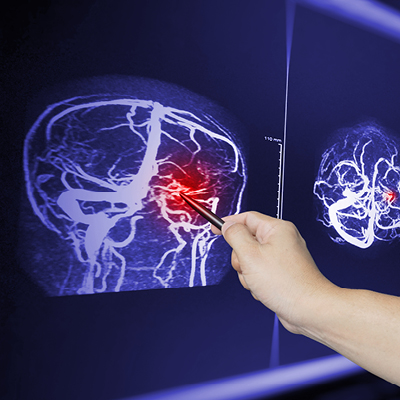Traumatic Brain Injuries: What You Need to Know
Posted September 05, 2023 by Paul Hartzfeld, M.D.

When the weather gets warmer in Northeast Ohio, more patients are admitted to the hospital with a traumatic brain injury (TBI). This increase can be attributed to more participation in activities outside that require a helmet, such as riding a bicycle, motorcycle and playing contact sports, such as football.
According to the CDC, there are an estimated 1.7 to 3.8 million traumatic brain injuries each year in the United States. With the heightened safety risks associated with outdoor recreational activities, it is important to know when a head injury is severe or has resulted in TBI that requires immediate medical attention.
About Traumatic Brain Injury
A traumatic brain injury (TBI) occurs when a sudden bump, blow or jolt to the head causes the brain to bounce or twist in the skull, injuring brain cells, breaking blood vessels or creating chemical changes.
TBIs range from mild to severe and can result in various symptoms.
For mild injuries:
- Headache
- Confusion
- Dizziness
- Blurred vision
- Trouble concentrating
- Mood changes
For severe injuries:
- Nausea or vomiting
- Slurred speech
- Arm or leg weakness
- Loss of consciousness
- Seizures
- Problems thinking
- Possibly death
Treatment
For any head injury, you should see a provider for a neurological evaluation and testing to rule out brain swelling or bleeding.
- For a mild injury, such as a concussion, treatment involves rest, monitoring and over-the-counter medications.
- For a moderate to severe injury, seek immediate medical attention to lessen damage due to inflammation, bleeding or reduced oxygen supply to the brain. Surgery may be necessary to relieve pressure on the brain or remove blood.
However, the best form of treatment for TBI is prevention.
Prevention
One of the most effective ways to prevent a TBI is to wear a helmet. Helmets can help to reduce the risk of head injury by up to 85%, and they can also help to protect you against more severe injuries, such as skull fractures and brain contusions. The National Highway Traffic Safety Administration estimates that, from 2002 to 2017, more than 25,000 lives have been saved by wearing motorcycle helmets.
Research has shown that not using a helmet can lead to increased hospital admissions with life-threatening head injuries that require intensive care. Other benefits of wearing a helmet include:
- Helmets can help to reduce:
- The risk of death by up to 75%
- The risk of long-term disability by up to 60%
- The cost of medical care
If you are not sure whether or not you should wear a helmet, ask yourself these questions:
- Am I participating in an activity where I could fall or be hit in the head?
- Is there a risk of serious injury if I fall or get hit in the head?
- Am I willing to risk my life or suffer a severe injury to avoid wearing a helmet?
Please wear a helmet if you answered yes to any of the questions above.
Helmet Tips
You should find a helmet that fits you properly for the best protection. Below are a few tips to ensure you find your best fit:
- Choose a helmet appropriate for the activity you will be participating in.
- Make sure the helmet fits properly – a helmet that is too loose will not provide protection.
- Adjust the straps so the helmet is snug but not too tight – the helmet should provide even pressure around your head.
- Wear the helmet low on your head, with the strap under your chin.
Remember, it’s crucial to seek medical attention if you suffer from any head injury. And, the best way to keep yourself and your loved ones safe is by wearing a helmet to protect your brain and skull.
About the Author
Vitality eNews Sign Up
Receive the Summa Health eNewsletter for the latest health tips, advice and updates.

